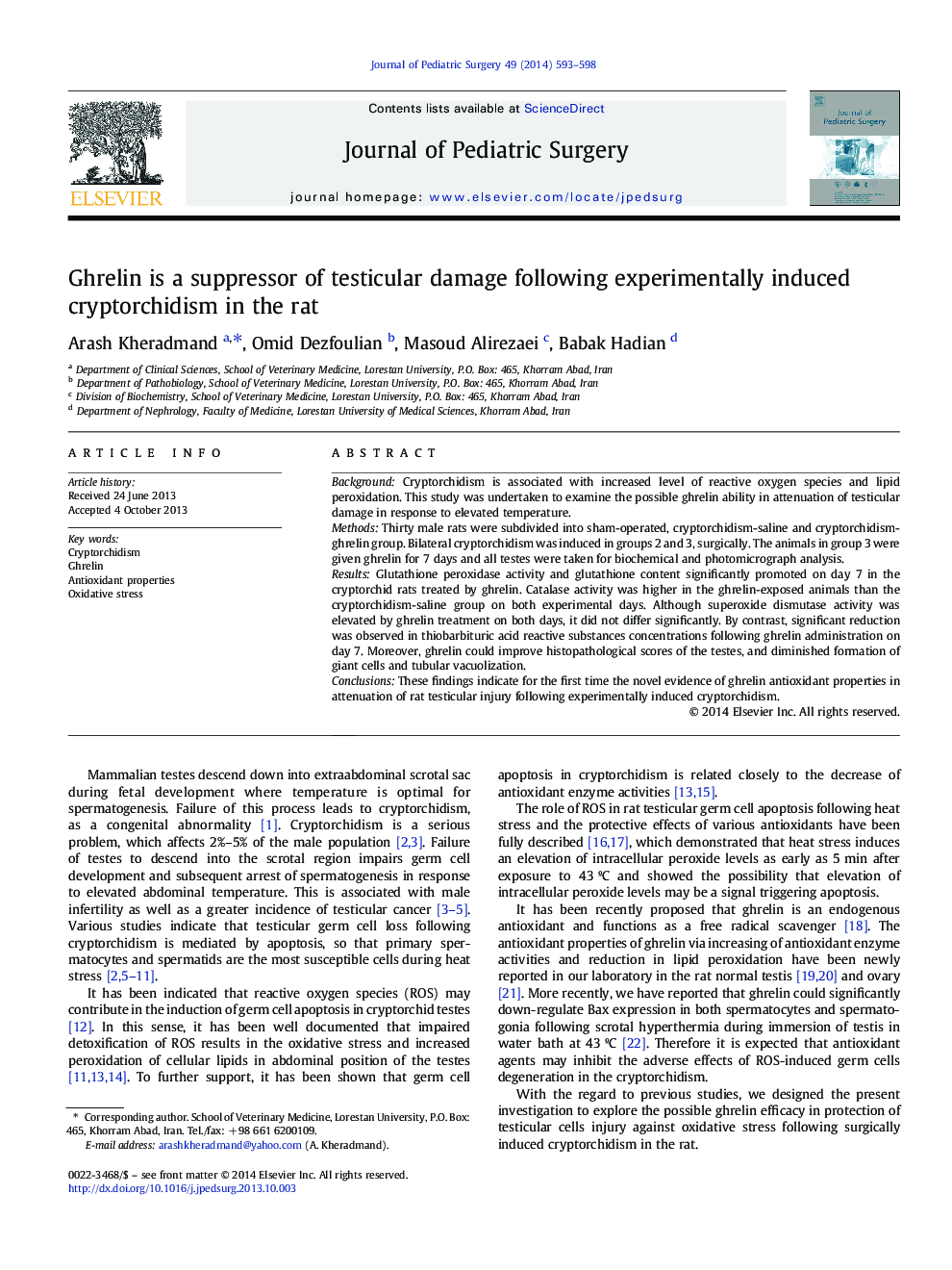| Article ID | Journal | Published Year | Pages | File Type |
|---|---|---|---|---|
| 4155318 | Journal of Pediatric Surgery | 2014 | 6 Pages |
BackgroundCryptorchidism is associated with increased level of reactive oxygen species and lipid peroxidation. This study was undertaken to examine the possible ghrelin ability in attenuation of testicular damage in response to elevated temperature.MethodsThirty male rats were subdivided into sham-operated, cryptorchidism-saline and cryptorchidism-ghrelin group. Bilateral cryptorchidism was induced in groups 2 and 3, surgically. The animals in group 3 were given ghrelin for 7 days and all testes were taken for biochemical and photomicrograph analysis.ResultsGlutathione peroxidase activity and glutathione content significantly promoted on day 7 in the cryptorchid rats treated by ghrelin. Catalase activity was higher in the ghrelin-exposed animals than the cryptorchidism-saline group on both experimental days. Although superoxide dismutase activity was elevated by ghrelin treatment on both days, it did not differ significantly. By contrast, significant reduction was observed in thiobarbituric acid reactive substances concentrations following ghrelin administration on day 7. Moreover, ghrelin could improve histopathological scores of the testes, and diminished formation of giant cells and tubular vacuolization.ConclusionsThese findings indicate for the first time the novel evidence of ghrelin antioxidant properties in attenuation of rat testicular injury following experimentally induced cryptorchidism.
